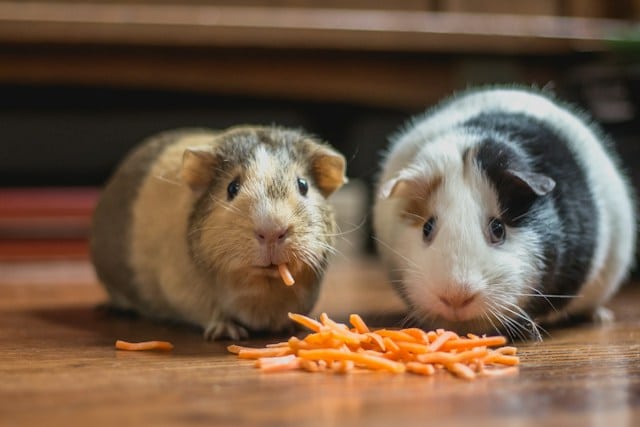What’s the Most Efficient Method for Dealing with Excessive Shedding in Huskies?

If you are a pet owner, particularly of a husky, you must be familiar with the struggle of managing your pet’s shedding. The sight of your dog’s hair everywhere – on your clothes, furniture, and even in your food can be quite overwhelming. We understand your worries and are here to help. In this article, we will delve into the reasons behind excessive shedding in Huskies, and explore the most efficient methods to handle this situation.
Understanding Why Huskies Shed
Before we can address the issue of shedding, we should first understand why it happens. Shedding is a natural process for dogs, and it is especially pronounced in breeds like Huskies that have a double coat. Their coat consists of a dense under layer of fur, which serves to keep them warm in cold climates, and a top coat of longer hair, which helps repel water and block UV rays.
Avez-vous vu cela : What’s the Best Way to Address Compulsive Digging in Terrier Breeds?
Huskies shed their undercoat twice a year in a process known as "blowing the coat." This is a completely normal and healthy process, although it can seem excessive compared to other breeds. But over-shedding can also be a sign of health problems, such as skin disorders, allergies, or even serious internal issues. If your Husky’s shedding seems unusually excessive, it might be a good idea to consult a vet.
Regular Grooming: The Best Way to Control Shedding
Regular grooming is the most simple and efficient method to handle shedding in Huskies. A good grooming routine will not only remove the loose hair from your pet’s coat but will also keep it healthy and shiny. It will enhance your Husky’s overall appearance, while also promoting good blood circulation, reducing skin problems, and creating a bonding experience between you and your pet.
A voir aussi : What Are the Best Strategies for Calming a Hyperactive Kitten During the Night?
Start with daily brushing. The best brush to use for a Husky is one that can reach into the undercoat, like a rake or a deshedding tool. Brushing helps to remove dead hair and distribute natural oils across your dog’s skin and coat. This simple routine can significantly reduce the amount of fur that ends up on your furniture and clothing.
In addition to brushing, consider giving your Husky regular baths. While Huskies don’t require frequent baths, doing so during the peak shedding season can help loosen the undercoat and make it easier to brush out. Always use a dog-specific shampoo that is gentle on their skin.
Dietary Adjustments to Support Coat Health
A proper diet may also help reduce shedding in your Husky. Providing a balanced diet with high-quality proteins, healthy fats, and essential vitamins and nutrients is crucial for maintaining a healthy coat. Omega-3 and Omega-6 fatty acids, found in fish and flaxseed oil, are particularly beneficial for maintaining skin health and reducing hair loss.
Avoid feeding your Husky with low-quality dog food that contains fillers and artificial ingredients, as it can lead to poor skin health and increased shedding. If you are unsure about the best diet for your pet, consider consulting a vet or a pet nutritionist.
Hydrating for Healthy Skin and Fur
Just as hydration is essential for humans, it is equally important for dogs. Dehydration can lead to dry skin, which can exacerbate shedding. Make sure your Husky has constant access to fresh, clean water. It’s also a good idea to include foods in their diet that have high water content, like fresh fruits and vegetables.
Regular Vet Check-ups for Underlying Health Issues
While shedding is a normal part of owning a Husky, it’s important to keep an eye out for any abnormal or excessive shedding patterns. This could indicate underlying health issues, like allergies, parasites, hormonal imbalances, or more serious health problems.
Regular vet check-ups can help identify and treat these issues early, before they lead to excessive shedding or other serious health problems. Remember, a healthy Husky is a happy Husky, and a happy Husky is a joy to live with.
In conclusion, managing shedding in Huskies involves a combination of regular grooming, a balanced diet, hydration, and regular vet check-ups. It’s all part of the responsibility and joy of owning a Husky. While it may seem like a lot of work, the love and companionship that a Husky brings into your life make it all worthwhile.
Appropriate Living Conditions for Huskies
Another critical aspect to consider to reduce shedding in Huskies is to provide them with suitable living conditions. Remember, Huskies originate from cold regions, and their double coat is naturally designed to protect them from freezing temperatures. When they are exposed to warm climates for prolonged periods, it may trigger their body to shed excessively as they attempt to cool down.
Ensure that your Husky has a cool and comfortable place to sleep, especially during the summer months. Some Husky owners find that providing an air-conditioned environment for their pets greatly helps reduce excessive shedding. If this is not feasible, providing them access to shaded areas outdoors and plenty of fresh cool water can also do the trick.
Exercise also plays a significant role in a Husky’s overall health, including the health of their coat. Huskies are active and energetic dogs that require daily physical activities. Regular exercise can help regulate their body temperature and potentially reduce the need for excessive shedding.
Lastly, controlling environmental allergens can also help manage excessive shedding. Just like humans, dogs can have allergies to certain types of grass, pollen, dust mites, and cleaning products. Keeping your home clean and using hypoallergenic products for cleaning can help reduce allergens and thus minimize your Husky’s shedding.
The Role of Supplements for Husky Coat Health
While a balanced diet is essential for your Husky’s overall health and coat condition, sometimes it may not be enough. That’s where supplements come into play. Certain supplements are specifically designed to help improve dog skin and coat health and reduce shedding.
Fish oil supplements, for instance, are rich in Omega-3 fatty acids, which are known to promote healthy skin and coat. Biotin supplements can also be beneficial in maintaining a healthy coat and reducing shedding. They can help strengthen the hair follicle, which can ultimately prevent hair loss and promote a shiny and lush coat.
If you are considering dog supplements, always consult your vet for guidance. They can help you determine the appropriate dosage and whether it’s a good fit for your pet’s dietary needs. Remember, supplements should never replace a balanced diet but serve as an addition to it.
Conclusion: A Multi-Faceted Approach to Managing Husky Shedding
Excessive shedding in Huskies can indeed be a challenge. However, by understanding why they shed and taking proactive steps to manage it, you can significantly reduce the amount of loose fur floating around your home.
A combination of regular grooming, providing a balanced diet and proper hydration, ensuring suitable living conditions, and considering dietary supplements can all play a role in controlling Husky shedding. Regular vet check-ups are also crucial to catch any underlying health issues that may be causing excessive shedding.
Remember, every Husky is unique, and what works for one may not work for the other. It’s essential to understand your dog’s individual needs and adjust your approach accordingly. The key is consistency and patience. While you can’t stop a Husky from shedding completely, you can certainly manage it effectively.
In the end, the love, loyalty, and happiness that a Husky brings makes dealing with their shedding nothing more than a minor inconvenience in the grand scheme of things. So, embrace your Husky, loose hair and all. After all, the companionship they offer is worth every bit of fur you may find in your home.
